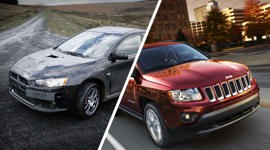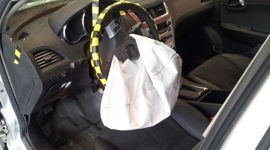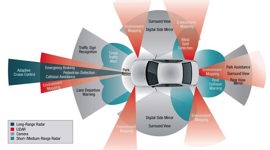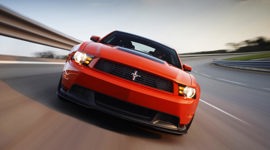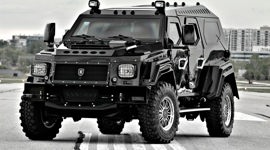Platform sharing used to be a dirty secret in the automotive world, with car companies going to great lengths to conceal the obvious begging, borrowing, and stealing that went on when one of more models were built from the same parts bin. Nowadays it’s the backbone of the entire industry as automakers strive to keep development costs down and recoup investment on existing technologies while improving efficiency and performance on the road and in their manufacturing.
Let's take a quick look at 10 examples of fraternal twins - platform-sharing models that did it right by repositioning identical platforms to offer unique automotive experiences.
1. Lincoln LS / Jaguar S-Type
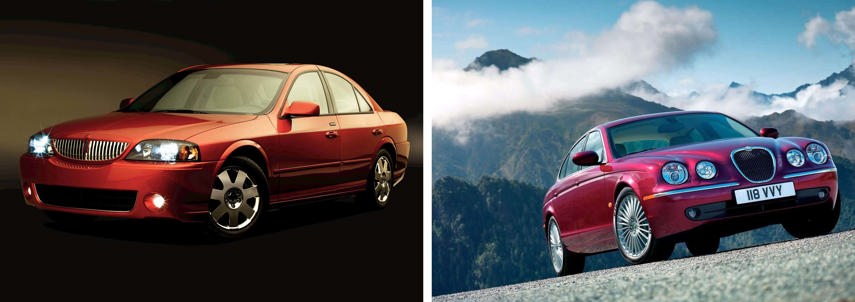
Neither of these vehicles were successful in the marketplace - Lincoln bungled the seven year lifespan of the LS luxury sedan while buyers simply never cottoned to the retro looks of Jaguar's S-Type - but each of these four-door models were competitive, smooth driving premium vehicles with V8 options. The S-Type R upped the ante with a supercharged eight-cylinder good for 400 horsepower, while the LS provided a five-speed manual gearbox with V6 editions in an effort to go after BMW customers. Most importantly: side-by-side, you'd never know that these two turn-of-the-millennium cars rode on the same DEW98 platform.
2. Dodge Charger / Dodge Challenger
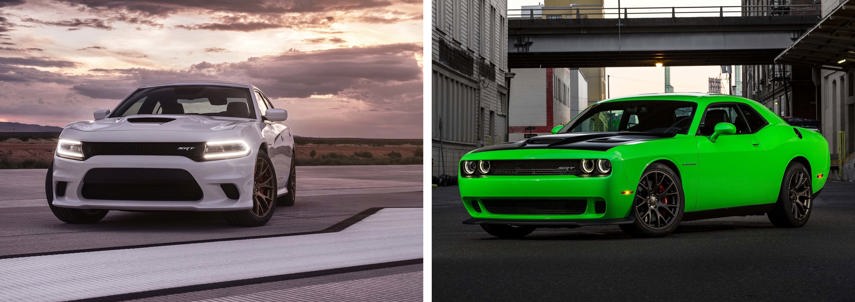
The Dodge Charger is a four-door family sedan, while the Dodge Challenger is a retro muscle coupe targeted at the Ford Mustang and Chevrolet Camaro. Each of these models is based on the Chrysler LX platform, which explains why the Challenger's enormous back seat and ponderous curb weight - each cribbed from the Charger - set it apart from its sportier rivals. Dodge's ability to share drivetrain development between these two cars is why we were gifted with 707-horsepower Hellcat editions of each for the 2015 model year.
3. Chrysler 300 / Mercedes-Benz E-Class
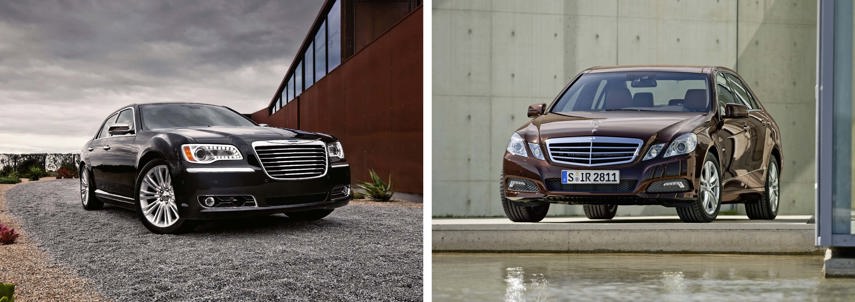
The Chrysler LX platform used by the Charger/Challenger twins also underpins the Chrysler 300 sedan (and the departed Dodge Magnum wagon). Its roots reach across the Atlantic, however, and touch on the brief 'merger of equals' between the American brand and Daimler, parent company of Mercedes-Benz. This explains why there's a healthy dose of Mercedes-Benz E-Class DNA embedded in the LX (and its longtime five-speed automatic transmission), and consequently every Chrysler and Dodge vehicle to have been based on it, despite there being no family resemblance between any of these products.
4. Jeep Grand Cherokee / Mercedes-Benz M-Class

That union between Chrysler and Daimler also resulted in the unlikely fraternal twinning of the Jeep Grand Cherokee and Mercedes-Benz M-Class. From 2011 onward, the Grand Cherokee's WK2 platform moved beyond merely sharing the occasional engine and transmission with the M-Class as it had with its previous generation and featured a modified version of the same chassis underpinning the M-Class SUV. The M-Class also gave life to the similar, but longer Dodge Durango. Neither the Durango nor the M-Class offer the same level of off-road ability or array of four-wheel drive systems available with the Jeep, but their backbones remain the same.
5. Mitsubishi Eclipse / Dodge Stratus / Chrysler Sebring

Before Chrysler got into bed with Mercedes-Benz, its longtime platform-sharing partner was Mitsubishi through the Diamond Star Motors initiative that produced a long list of compact and mid-size offerings throughout the 80s and 90s. One of the most unusual examples of corporate synergy was the Chrysler D platform, which spawned the ST-22 two-door chassis used by the Mitsubishi Eclipse, the Dodge Stratus coupe, and the Chrysler Sebring coupe from 2000 to 2005. This created a situation where the Sebring sedan and Sebring convertible sat on a different platform than the Sebring coupe, which explained the lack of family resemblance beyond the grille up front.
6. Mazda MX-5 Miata / Fiat 124 Spider
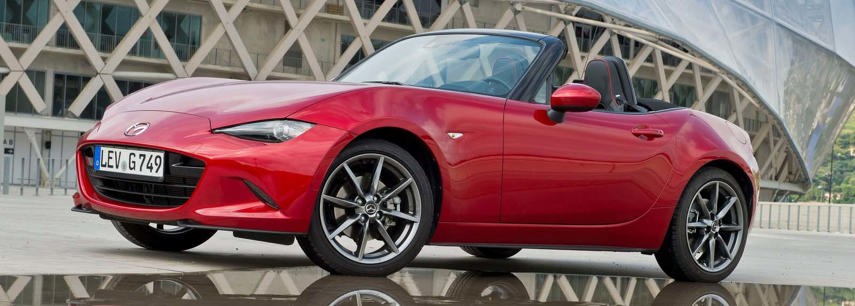
The new 2016 Mazda MX-5 Miata has only been on the market for a few months, but it's already donated its skeleton to an upcoming roadster from Fiat called the 124 Spider. The Miata's platform will be mated with an Abarth-sourced engine to create a more powerful version of the convertible for U.S. audiences, and while technical details have yet to be released, look for the Fiat to outperform its Japanese twin in a straight line.
7. Nissan 370Z / Infiniti G Sedan / Infiniti FX
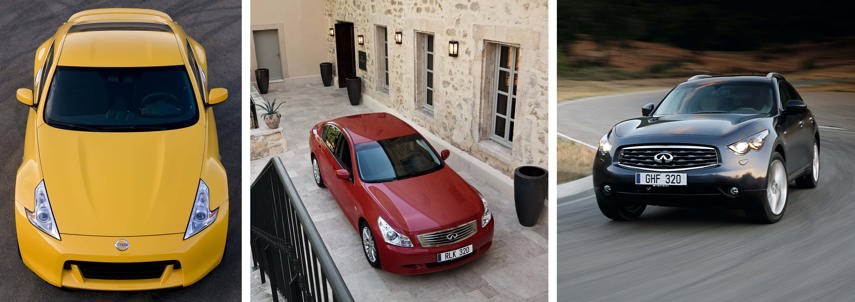
Nissan's financial status was shaky at best heading into the 2000s, so it poured all of its development dollars into a single platform: FM, or 'front midships' after its engine placement. The FM platform pulled duty in a startling array of models, including the Nissan 350Z and 370Z, the Infiniti G sedan and coupe, and the Infiniti FX and EX SUVs. It was an interesting game of give-and-take: the FX handled better than most other sport-utility vehicles because of its sporty, rear-wheel drive layout and suspension setup, but the Nissan Z cars were heavier than they really should have been due to using over-built components intended for the bigger members of the family. At the heart of the FM platform was the VQ V6 engine, a motor that has defined ubiquity at Nissan for more than a decade.
8. Ford Mustang / Ford LTD / Ford Durango / Ford Thunderbird
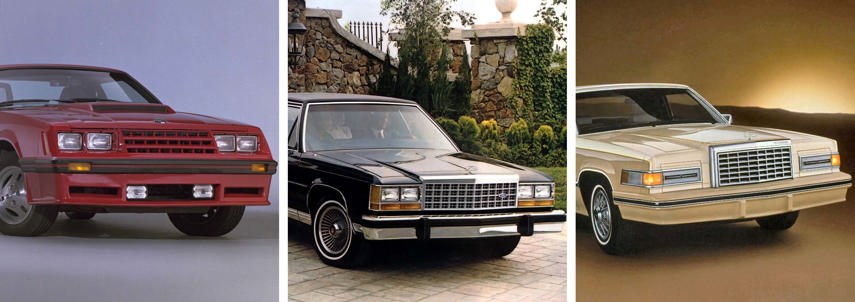
One of Ford's most famous models – the Mustang – was also one of its most promiscuous from a platform-sharing perspective. From 1979 until the mid-90s, the Ford Fox chassis provided a foundation not just for the 'Stang, but also a panoply of models that included the LTD wagon and sedan, the Ford Fairmont sedan and coupe, the Ford Durango pickup/car that briefly replaced the Ranchero, and even the luxury coupe. Lincoln and Mercury also got in on the deal. Engines and suspension parts from each of these models swap easily, making it a cinch to create the customized Franken-Ford Fox of your dreams.
9. Dodge Aries / Plymouth Voyager / Chrysler Town Country / Chrysler LeBaron / 100 Other Models
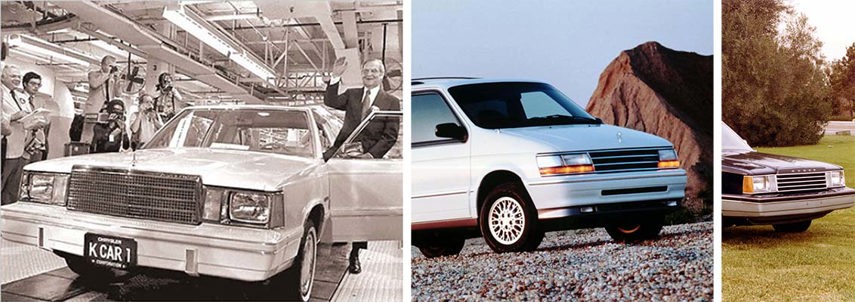
When it comes to platform-sharing madness, Ford and Diamond Star Motors might get an honourable mention, but Chrysler wins the grand prize with the K car. In a bid to drag itself out of bankruptcy, Chrysler and then-CEO Lee Iacocca dumped all of their money into the K body, eventually using it to build minivans (Plymouth Voyager, Chrysler Town & Country), compacts (Dodge Aries, Plymouth Reliant), luxury cars and limousines (Chrysler Executive Sedan, Chrysler TC by Maserati), and coupes and convertibles (Chrysler LeBaron). The list of cars built or based on the original K body platform is overwhelming, with the design enjoying nearly a 15-year production run.
10. Jeep Compass / Mitsubishi Lancer/Evolution X / Dodge Caliber / Chrysler 200
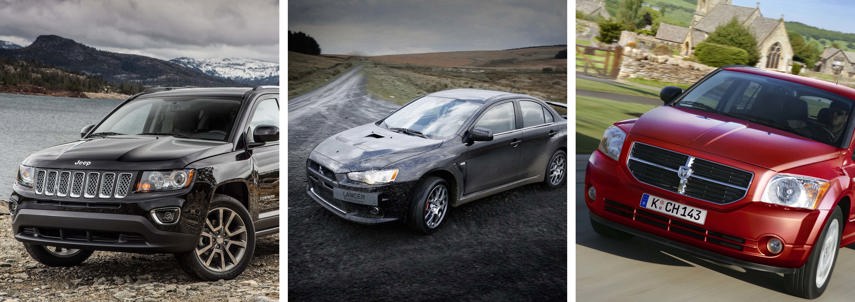
Nearly as prolific, and for the most part just as weird, is the tale of the Mitsubishi GS platform. The result of further partnership between Chrysler and Mitsubishi outside of the DSM initiative, the GS or 'Project Global' platform was just as likely to be found underneath a small SUV like the Jeep Compass as it was holding together the world-class Mitsubishi Evolution X sport sedan. Along the way it also managed to prop up models like the Chrysler 200 and Dodge Avenger, as well as Mitsubishi Outlander, making it a Swiss Army Knife of a platform that's still in use today.
